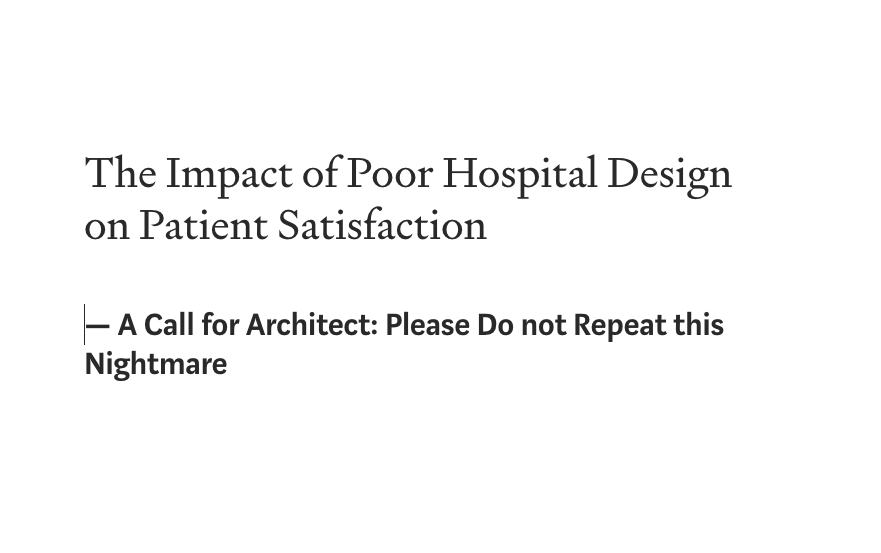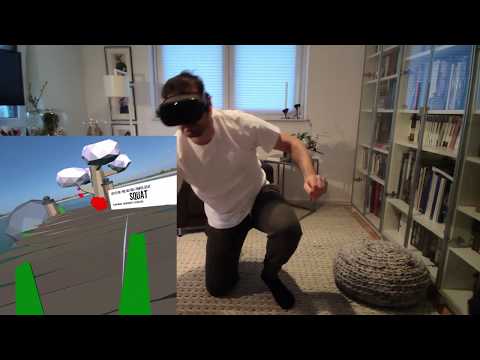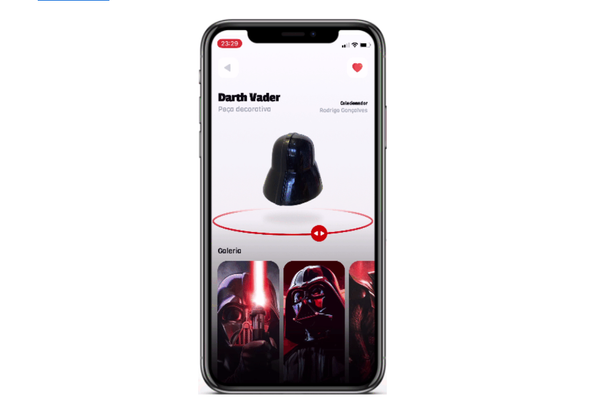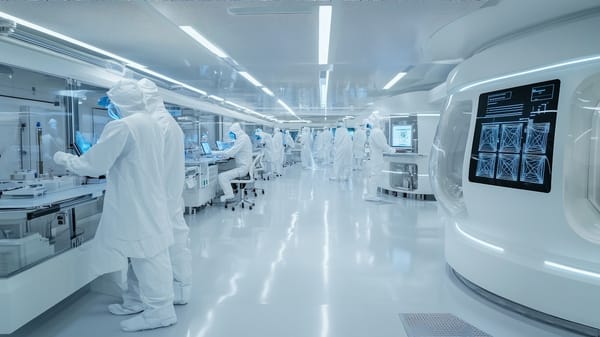The Impact of Poor Hospital Design on Patient Satisfaction - Architects: Please Do not Repeat this Nightmare
Table of Content
Visiting a hospital should not feel like navigating a maze, yet countless modern hospitals fail to deliver a user-friendly experience. Architectural flaws in hospital design do more than just frustrate visitors; they create logistical nightmares that undermine patient care and satisfaction.
This article explores the relationship between hospital design and patient satisfaction, emphasizing the critical need for healthcare facilities to prioritize efficient workflows and visitor-centric layouts.
The Chaos of Poorly Designed Hospitals
My recent visit to a sprawling hospital complex highlighted the consequences of ill-considered architecture. The design resembled a labyrinth, leaving first-time visitors disoriented and frustrated. Even a doctor friend working there admitted it took weeks to familiarize himself with the layout.
Navigating the facility—whether to locate a clinic, find radiology, or simply exit—proved to be an exhausting ordeal.
One major issue was the car parking structure. Spanning multiple floors, the parking lot was divided into convoluted sections labeled with letters, colors, and subsections. Even seasoned visitors struggled to remember where they parked.
Such inefficiencies not only waste time but also heighten stress for patients and their families.
Similar challenges arise inside the hospital itself. Patients often face long walks between blocks for routine referrals, and unclear signage only exacerbates the confusion.
The lack of a cohesive wayfinding system makes it nearly impossible for first-time visitors to navigate without repeatedly asking for directions.
Design and Workflow Challenges
Bad design doesn’t just affect patients; it disrupts clinical workflows as well. Hospitals should be structured to facilitate efficient patient movement and healthcare delivery. However, maze-like layouts and poor elevator placement can lead to delays, miscommunication, and operational inefficiencies.
For instance, transferring patients between departments or managing patient overflow becomes a logistical burden in such facilities.
During crises, these inefficiencies escalate. Consider infection control: quarantining a section of a poorly designed hospital would require locking down multiple elevators and pathways—a nearly impossible task without disrupting operations across the facility.
The design also impacts hospital management. Disjointed layouts make it challenging to oversee routine operations, manage staff shifts, and maintain infection control protocols. In emergencies, when time is of the essence, the complexities of a poorly designed hospital could cost lives.
The Emotional Toll on Patients
Patient satisfaction is directly linked to the hospital experience. Navigating a disorganized environment adds to the emotional and physical strain of already vulnerable individuals. Patients facing long walks between blocks or struggling to find their cars in labyrinthine parking structures are less likely to view the hospital favorably, even if they receive excellent medical care.
The emotional burden is comparable to other chaotic environments, such as Istanbul’s Perpa, a massive business center infamous for its maze-like design. Just as customers avoid Perpa for its poor user experience, patients may hesitate to return to a hospital where they feel disoriented and unsupported.
Recommendations for Improvement
Healthcare facilities must prioritize user-centric designs that enhance both patient satisfaction and operational efficiency. Here are some actionable recommendations:
- Conduct Workflow Simulations: Before finalizing designs, simulate patient and staff workflows to identify bottlenecks and inefficiencies.
- Implement Effective Wayfinding Systems: Use clear, visible, and accessible signage. Incorporate digital navigation tools and consider the needs of individuals with visual impairments.
- Design with Parking Efficiency in Mind: Simplify parking structures by reducing subdivisions and using intuitive labeling systems. Ensure that wayfinding extends to parking areas.
- Focus on Patient Flow: Align clinical departments to minimize unnecessary walking distances. Ensure that critical services, such as radiology, are easily accessible from multiple points.
- Incorporate Flexibility for Crisis Management: Design pathways and sections that can be easily isolated during emergencies without disrupting the entire facility.
- Gather User Feedback: Engage healthcare professionals and patients during the design phase to ensure the layout meets their needs.
Conclusion
Bad hospital design has far-reaching consequences, from operational inefficiencies to poor patient satisfaction. Architects and healthcare planners must understand that a hospital’s layout is not just a structural challenge but a critical component of patient care.
By prioritizing functional, user-friendly designs, hospitals can enhance patient experiences, streamline workflows, and ultimately improve the quality of care.
Further Readings
- Joshi, R., & Mehta, S. (2021). "Impact of Hospital Infrastructure on Patient Satisfaction." Journal of Healthcare Management, 66(3), 200-210.
- Smith, L. (2019). "The Role of Hospital Design in Patient Care." Healthcare Architecture Review.









